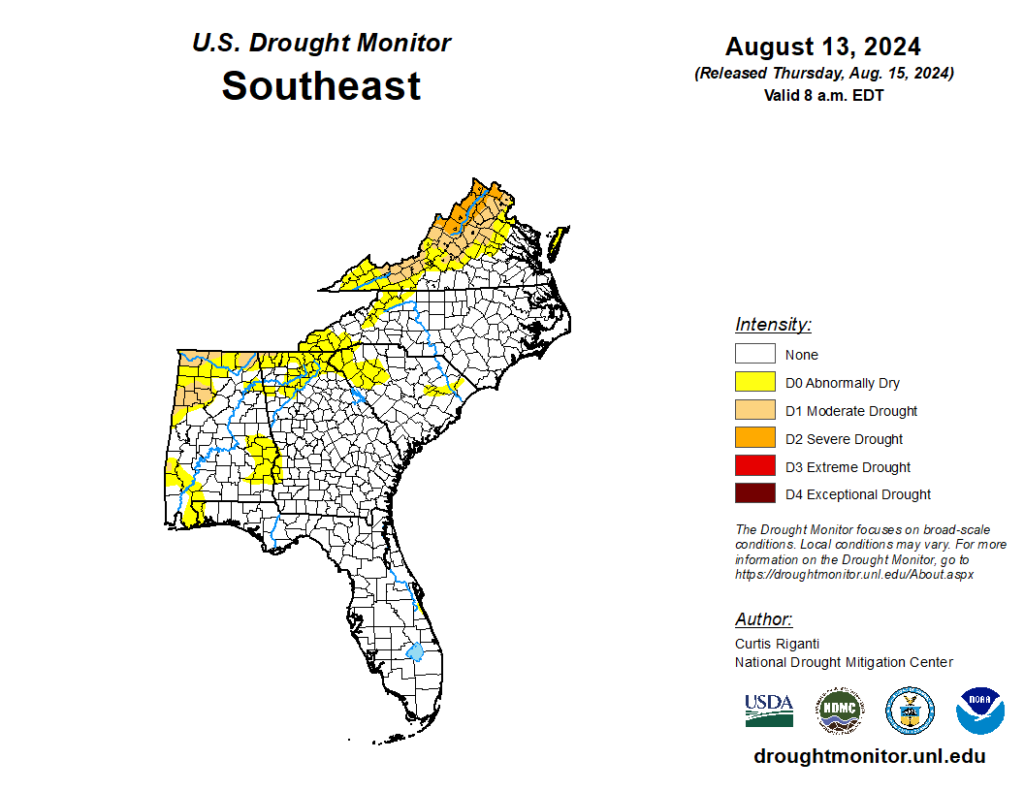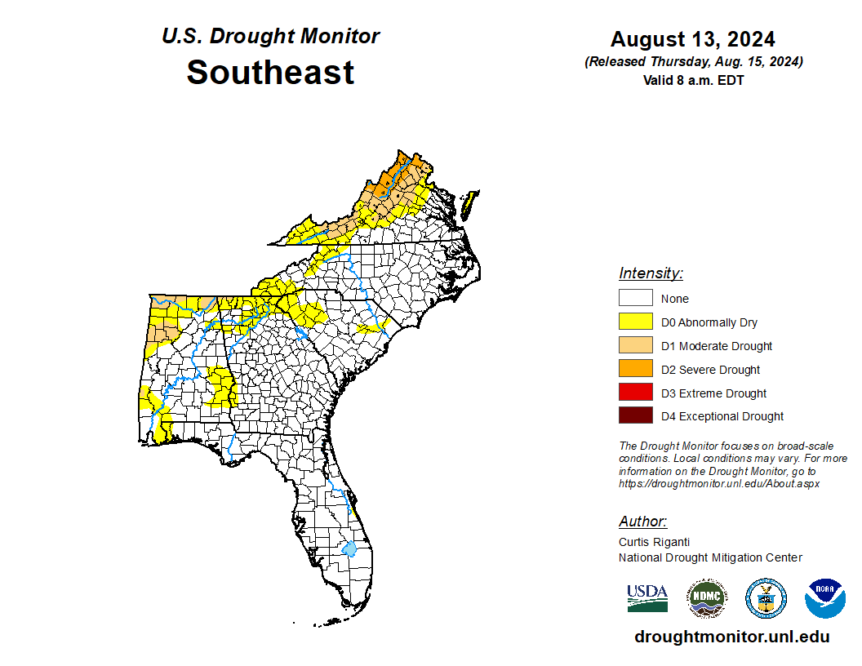
By Clint Thompson
The current dry weather with occasional spotty rainfall is trending across the Southeast. According to Pam Knox, University of Georgia Extension agricultural climatologist, it’s likely to continue through the week.
“I’m looking at the rainfall forecasts for the next couple of weeks. It does look like there’s going to be some periods of rain across different parts of the state and the region. The problem with summer rain is that it’s usually very spotty,” Knox said. “The total precipitation that’s in the forecast through Aug. 23 actually looks like it’s going to be less than half an inch for a lot of the Southeast. That is definitely going to be a problem.
“It’s going to be spotty, and there’s going to be a lot of dry spell. With the temperatures we’ve had, even though they have not been quite as bad as they have been, there are still high evapotranspiration rates. Going back to this dry pattern, it’s going to cause us some issues.”
Drought Monitor
According to the most recent release of the U.S. Drought Monitor, most of Florida and Georgia has sufficient moisture following Hurricane Debby. Abnormally dry and moderately dry conditions are still observed in North Alabama and North Georgia. Dry conditions could worsen in the absence of substantial rainfall.
Winter Rain Versus Summer Rain
“If you look at the mechanisms for what causes the rain, it’s different in the winter than it is in the summer. In the winter, most of our rain is associated with fronts; a cold front or warm front over the area. Those are pretty big features of the atmosphere, so if we get a cold front or warm front coming through, then we have a long line of area that gets precipitation,” Knox said.
“In the summer, our rainfall comes from two sources. One is the tropics, if we get any tropical rainfall. If you’re right along the path, as we saw with Hurricane Debby, you get a lot of rain, especially if it’s moving slowly. If you’re away from it, you don’t get any at all.
“Summertime pop-up storms form because the ground is warm and there’s enough moisture there to support the development of vertical cloud structure that becomes a thunderstorm. But those are on a very small scale. You get areas that are really wet, whereas across the county or across the street, you don’t get anything at all.”










